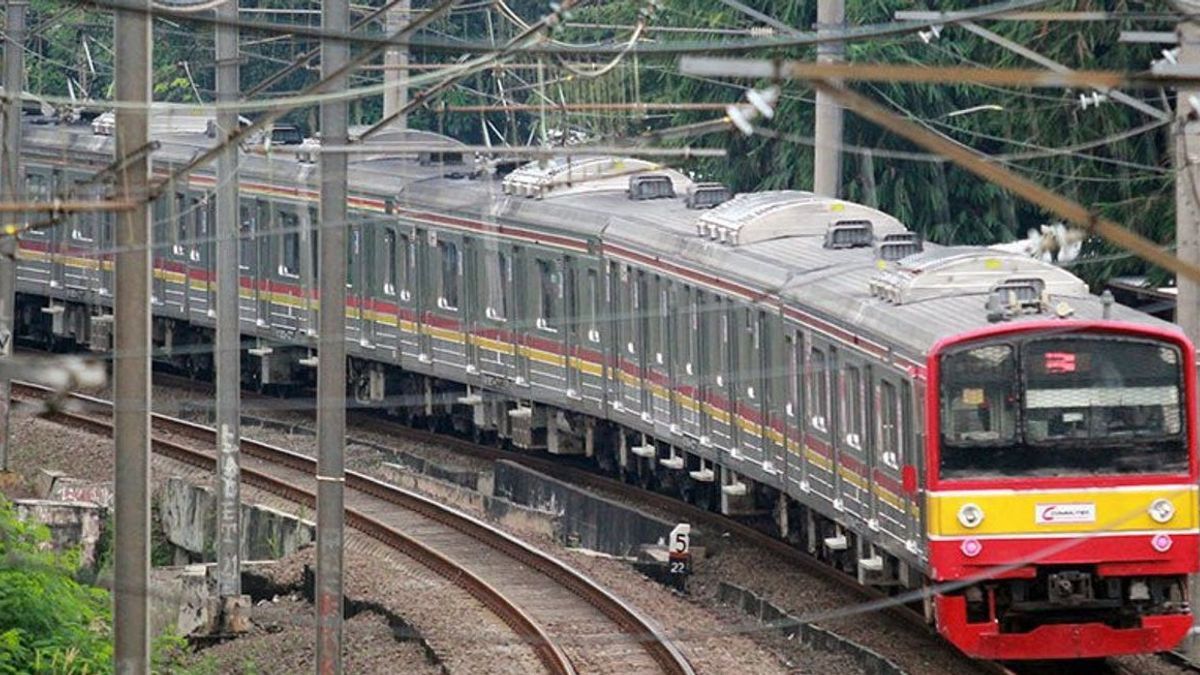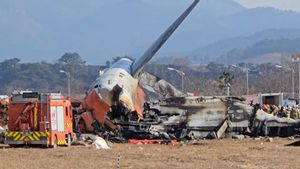JAKARTA - KAI Commuter recorded the highest volume of KRL users throughout 2021 in November by serving 12,400,098 users (or an average of 413,337 users per day) in Greater Jakarta, and 219,696 users (an average of 7,323 users per day) on the Yogyakarta-Solo KRL. .
"The handling of the COVID-19 pandemic that is getting better has made people gradually return to their activities outside their homes. This trend can also be seen in KRL user data," said VP Corporate Secretary of KAI Commuter, Anne Purba in a written statement received in Jakarta, Wednesday, December 8. from Between.
Anne said the number of Jabodetabek KRL users grew 13.85 percent compared to October 2021. Meanwhile, the volume of Yogyakarta-Solo KRL users grew 20.2 percent compared to the previous month.
Nevertheless, he said, the volume of KRL users is still far below the pre-pandemic figure which was able to serve around 1 million users per day or more than 26 million every month.
Since the beginning of the year, until November 2021 the Jabodetabek KRL has served 109,376,293 users. This figure is lower than the same period in 2020 where there were 141,449,845 users served by the Jabodetabek KRL.
Meanwhile, in operation from February to November 2021, the Solo Yogyakarta KRL has served 1,448,836 users.
In terms of operations, KAI Commuter continues to make improvements to seek services that suit customer needs and maximize health protocols, especially social distancing during peak hours.
In January 2021 the frequency of KRL trips was only 964 per day with 93 train series. Meanwhile, the current frequency of KRL trips reaches 1,005 per day with 94 train series.
Meanwhile, in Yogyakarta KRL, the increase in transport capacity is carried out by extending the formation of trains that serve users. In February 2021 and now, the number of KRL trips will remain at 20.
"But if at the beginning of the year it was served by two series of KRL with the formation of four trains, now it has been served by three series of KRL with the formation of eight trains," he said.
According to Anne, the operational increase was possible due to the increased productivity of the company during the pandemic to support the national economy.
In terms of providing KRL facilities, before the pandemic to serve 1.2 million users per day, commuter KAI prepared 86 series of KRL.
However, during this pandemic, to support healthy mobility while maintaining distance, KAI Commuter can prepare 94 series of KRL even though the user volume has not reached 50 percent of the user volume before the pandemic.
He said the operation of the KAI Commuter during this pandemic was also greatly influenced by the rules for community activities, including in the transportation sector.
"Currently we are more adaptive because we have to be able to adapt to changes in KRL operation patterns and services according to the latest regulations," said Anne.
The English, Chinese, Japanese, Arabic, and French versions are automatically generated by the AI. So there may still be inaccuracies in translating, please always see Indonesian as our main language. (system supported by DigitalSiber.id)










